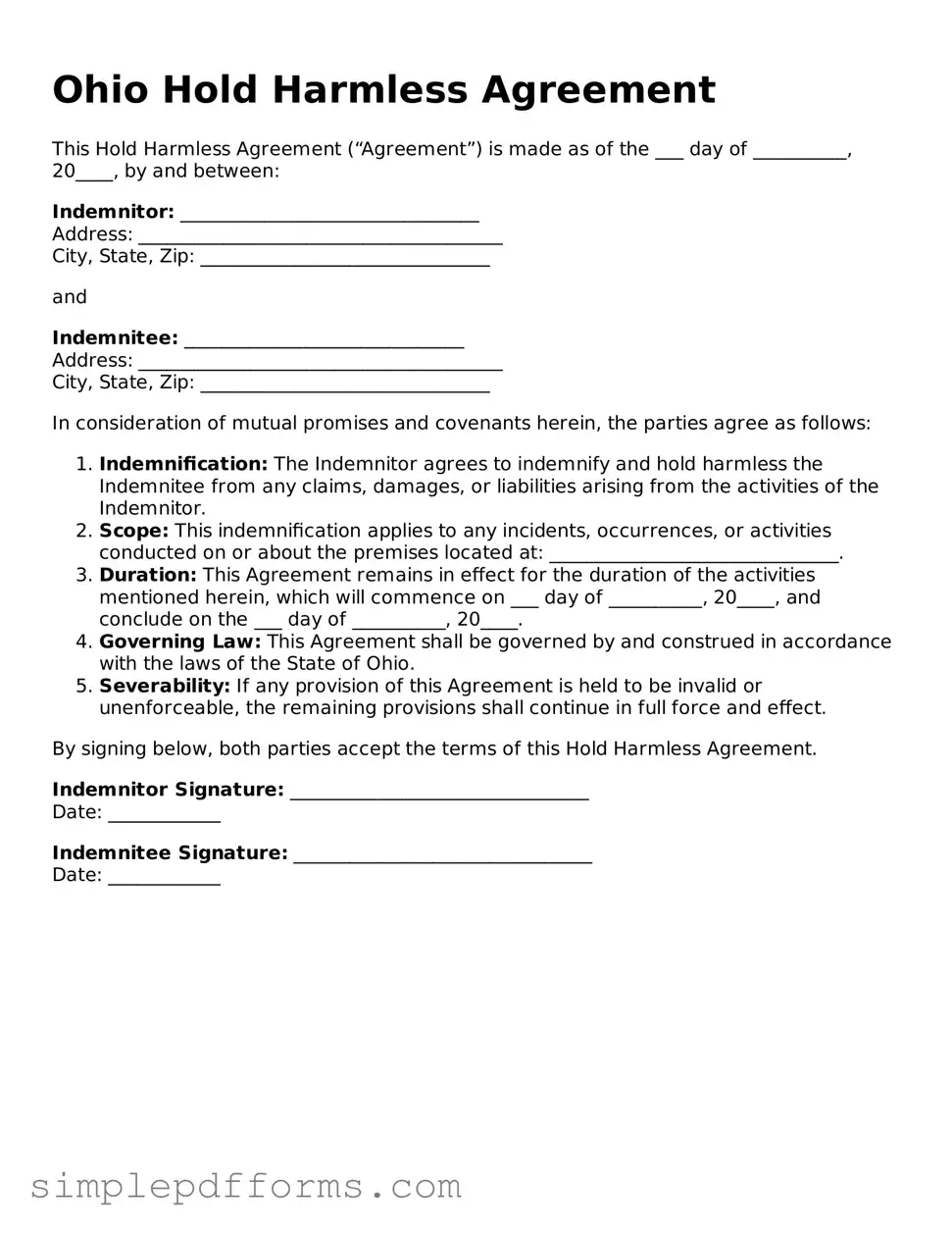Ohio Hold Harmless Agreement
This Hold Harmless Agreement (“Agreement”) is made as of the ___ day of __________, 20____, by and between:
Indemnitor: ________________________________
Address: _______________________________________
City, State, Zip: _______________________________
and
Indemnitee: ______________________________
Address: _______________________________________
City, State, Zip: _______________________________
In consideration of mutual promises and covenants herein, the parties agree as follows:
- Indemnification: The Indemnitor agrees to indemnify and hold harmless the Indemnitee from any claims, damages, or liabilities arising from the activities of the Indemnitor.
- Scope: This indemnification applies to any incidents, occurrences, or activities conducted on or about the premises located at: _______________________________.
- Duration: This Agreement remains in effect for the duration of the activities mentioned herein, which will commence on ___ day of __________, 20____, and conclude on the ___ day of __________, 20____.
- Governing Law: This Agreement shall be governed by and construed in accordance with the laws of the State of Ohio.
- Severability: If any provision of this Agreement is held to be invalid or unenforceable, the remaining provisions shall continue in full force and effect.
By signing below, both parties accept the terms of this Hold Harmless Agreement.
Indemnitor Signature: ________________________________
Date: ____________
Indemnitee Signature: ________________________________
Date: ____________
